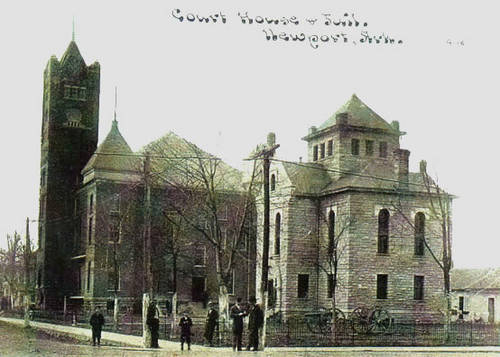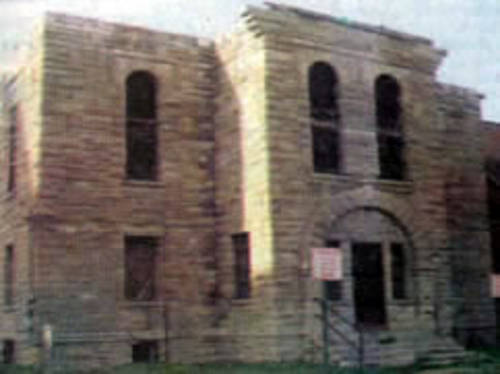History of the Sheriiff's Office
The history of the sheriff is a chronicle of Western Civilization, a biography of democracy and a work-picture of man’s quest for equity and self-determination in matters pertaining to his government.
Whenever we scan the documents of British and American history, we find the Office of the Sheriff entrusted with the maintenance of law and order and the preservation of domestic tranquility. Some historians date the Office of the Sheriff to ancient Roman times. Others express the belief that the Office had its beginnings prior to the writing of the Magna Carta in 1215, in England. Of the sixty-three Articles in the Magna Carta, twenty-seven Articles refer directly or indirectly to the Office of the Sheriff.
Historians agree that the Office of the Sheriff is one of the most familiar and useful to be found in the history of English Institutions. The functions and powers of the Office have undergone changes but for over seven centuries it has maintained a continuous existence and preserved features.
The Office of the Sheriff is the oldest law enforcement office known within the common law system. The Office of the Sheriff is the only elected law enforcement office in the county. Today, with some variations from state to state, the duties of the Office of the Sheriff have remained consistent.
The sale of property has been the responsibility of the Office of the Sheriff for over seven hundred years. The authority over bailiffs, constables, wardens, and the jail are a continuing responsibility along with court safety and the service of warrants. Today’s Office of the Sheriff continues the responsibilities of the past and had expanded its duties to adapt to a modern world. Examples of these expanded duties include drug prevention, prisoner transportation, crime prevention, victim assistance, search and rescue, identification and communications.
Past Sheriffs of Jackson County
Isaac Gray, 1830-35
James Robinson, 1835-38
Isaac Gray, 1838-42
J. Robinson, 1842-44
J. H. T. Webb, 1844-46
J. J. Waddle, 1846-50
G. Silvey, 1850-54
R. Hudson, 1854-56
A. H. Logan, 1856-62
J. R. Jelks, 1862-64
L. R. Clay, 1864-66
John R. Loftin, 1866-1868
R. Kinman, 1868-1872
J. S. Smith, 1872-1874 Sheriff Smith died while in Office in 1873
H. N. Faulkinbury, 1873-1874
J. R. Loftin, 1874-1882
T. S. Stephens, 1882-1892
J. M. Hobgood, 1892-1896 Sheriff Hobgood died while in office in 1896
J. J. Walker, 1896- 1900
R. W. Bandy, 1900-1904
H. S. Simmons, 1904-1908
J. D. Neal, 1908-1912
J. F. McCuistion, 1912-1916
J. M. Ivy, 1916-1921
G. R. Hays, 1921-1926
D. J. Nance, 1927-1930
Gray Albright, 1931-1934
Lee Reid, 1935-1936 Sheriff Lee Reid was removed from office and Edwin McCall was appointed 9/11/1936
Lee Reid, 1937-1938 Failed to qualify, W. P. Davis was appointed 1/19/1937 and Edwin McCall was elected 10/19/1937
Edwin McCall, 1939-1940
D. J. Nance, 1941-1944
J. F. Mason, 1945-1952 Died in Office 12/5/1951 and Claude Foushee appointed
J. B. (Jake) Winningham, 1953-1956
Ernest C. Dyke, 1957-1960
L. Woodman, 1961-64
Ralph Henderson, 1965-78
Donald Ray, 1979-1994
Jim Bishop, 1995-2004
David Lucas, 2005- Present
Jackson County Officers Killed in the Line of Duty
Joe Wesley Allmon – November 1923
Deputy Joe Wesley “Wes” Allmon age 35 was shot and killed in the line of duty at 9:30 A.M. on the morning of November 27, 1923. Deputy Allmon was working in the Shoffner community when he spotted a black male by the name of Sam Cole, age 25, walking along the railroad tracks. Having a warrant for the arrest of Cole, charging him with gambling, Deputy Allmon walked towards Cole to place him under arrest. As Deputy Allmon ordered Cole to remove his hands from his pockets, Cole pulled a pistol and shot Deputy Allmon twice, once in the center of his chest and once just below the throat killing him instantly. Deputy Allmon had been a Jackson County Deputy for approximately one year and was married and had four children.
Historical Event in Jackson County Law Enforcement
The Olyphant Train Robbery
During an era of dangerous train robberies, one of the most dramatic occurred in Jackson County at Olyphant on November 3, 1893.
The Iron Mountain’s southbound passenger train No. 51 pulled to the side at 10:00 P.M. to allow a northbound train to pass. Seven masked riders brutally robbed the passengers. Over 200 gunshots were fired at the doors and windows of the coaches. The conductor, W. P. McNally was killed.
By midnight all surrounding counties had been alerted to be on the lookout for the outlaws. In less than two hours, James Hobgood, Sheriff of Jackson County, and Sheriff Marshell Patterson of Woodruff County were in close pursuit with posse and bloodhounds.
The next day, Deputy Sheriff Oscar Pennington of Independence County captured Tom Brady and George Paggett at Jamestown, a community northeast of Batesville. From their persons a part of the loot was recovered, with a map showing roads leading into the Indian Territory.
After their apprehension, Paggett, an ex-policeman from Little Rock, collaborated freely with authorities, bringing a speedy capture of all other outlaws. On December 6, Jim Wyrick was apprehended near Van Buren in Crawford County. By Christmas, Sam and Pennyweight Powell, Al Freeman, Bob Chesney, and Jim Hill (alias Albert Mansker) were captured in Craighead County.
On January 4, 1894, Tom Brady, Jim Wyrick, and Albert Mansker were brought to trial in Jackson County Circuit Court by Judge James Butler for the murder of W.P. McNally.
After thirty-three days of intensive arguments by the prosecution and the defense, they were found guilty on Feb. 6, 1894, and sentenced to hang. The jury determined from baggageman Billy Chittum that Jim Wyrick fired the shots that killed McNally.
In conjunction with a previous charge, Pennyweight Powell was given time in the state penitentiary, with sentences running consecutively. Sam Powell, Al Freeman, and Bob Chesney were believed to have been freed through some kind of political maneuver. George Paggett was given his freedom after turning state’s evidence.
On April 6, 1894 Tom Brady, Jim Wyrick, and Albert Mansker met their destiny at the gallows in the only triple execution in Jackson County that was held on the jail yard in a fenced-off area. One of the largest crowds ever seen in Newport gathered for this hanging.
Jackson County Courthouse & Old Sheriff’s Office and County Jail



The F.B. Hull Construction Company and the Pauly Jail Building Company of St. Louis, Missouri built the old Jackson County Jail in 1906 & 1907 at a cost of $22,000.00.
The jail was 44×47 feet, three stories of native stone, with a stone tower; the total height was 64 feet. There were seventeen rooms in all; the first floor was for the Sheriff or Jailer. This floor was used for insane persons and female prisoner, with office and sleeping room for the jailer, and the jail kitchen.
The second floor had eight furnished cells of saw and file proof steel, with space for eight more should they be needed.
The top floor or tower was the execution room, with the latest model steel gallows. The gallows and tower room were removed from the jail in the early 1960s. In 1978 a new county jail was built and the old jail was never used again. In 2005, due to years of nonuse and deterioration the old County Jail was demolished.




